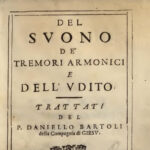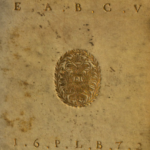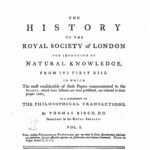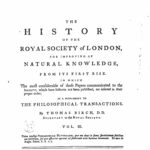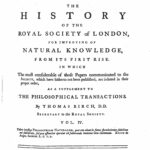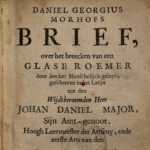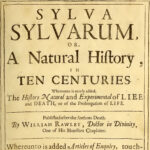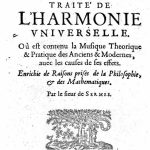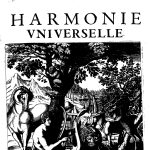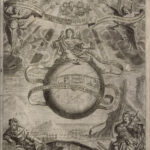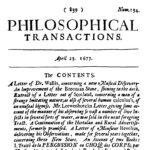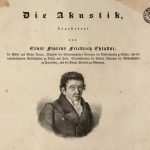Contributor Essays
Breaking Glasses and Shattering Myths
Sound and Science in Seventeenth - Century Europe
by Leendert van der Miesen
March 16, 2021
Early modern science is often described as a visual endeavor, based on new strategies and technologies of visual observation. But a wide variety of sounds attracted equally broad scientific attention. Scholars, natural philosophers, and mathematicians investigated and experimented with sound and musical instruments and developed theories of hearing. Within scientific academies, such as the Royal Society in London (founded 1660) and the Académie des sciences in Paris (founded 1666), acoustical experiments were performed, musicians were invited to present their instruments, and theories of sound were debated. But sonic phenomena were difficult to capture in neat experimental settings. Moreover, there was no single understanding of the nature of sound that could explain such different phenomena as the movement of a string, an echo, or the mechanism of wind instruments. One particularly challenging question was the human voice’s capacity to break glass, an urban legend first addressed by European scholars in the 1670s.
It is now known that each tone of a voice, trumpet, or violin consists of a fundamental frequency with higher partials or overtones, which usually include the octave, a fifth above it, and an additional fourth above that. But in the seventeenth century, this phenomenon was only partially understood. Scholars did not yet accept the idea that a string, the human voice, or glass could generate multiple tones, and there were no standardized methods to investigate sounds difficult to hear. Some claimed to hear these individual tones, but others could not. Who were these fortunate people? In 1748, Denis Diderot (1713–1784) answered this by saying, “someone who has a pure organ [ear] and enjoys a healthy mind,” but how was this even determined?
These questions became especially urgent when in 1672 the German polymath Daniel Georg Morhof (1631–1691) (Fig. 1) devoted a small book to a peculiar experience of his a few years earlier in Amsterdam: De Scypho Vitreo per certum humanae vocis sonum fracto (On the Glass Cup Broken by the Sound of the Human Voice). On his way to England, Morhof had stopped in Amsterdam to see a friend, who persuaded him to visit the cellar of the wine merchant and wrestling instructor Nicolaes Petter (1642–1672), author of one of the first treatises on wrestling in Europe. Petter’s cellar at the Prinsegracht was a popular site for tricks and demonstrations—which included wrestling—and attracted a wide audience. It was here that Morhof witnessed Petter and his son shattering several glasses with their voices, astounding everyone present. Morhof wrote that sound can move metal or glass objects if they share similar proportions: sound can enter the “pores” of the material, causing it to burst. With his firsthand account, Morhof brought this curious experiment to the attention of a broader scientific community.
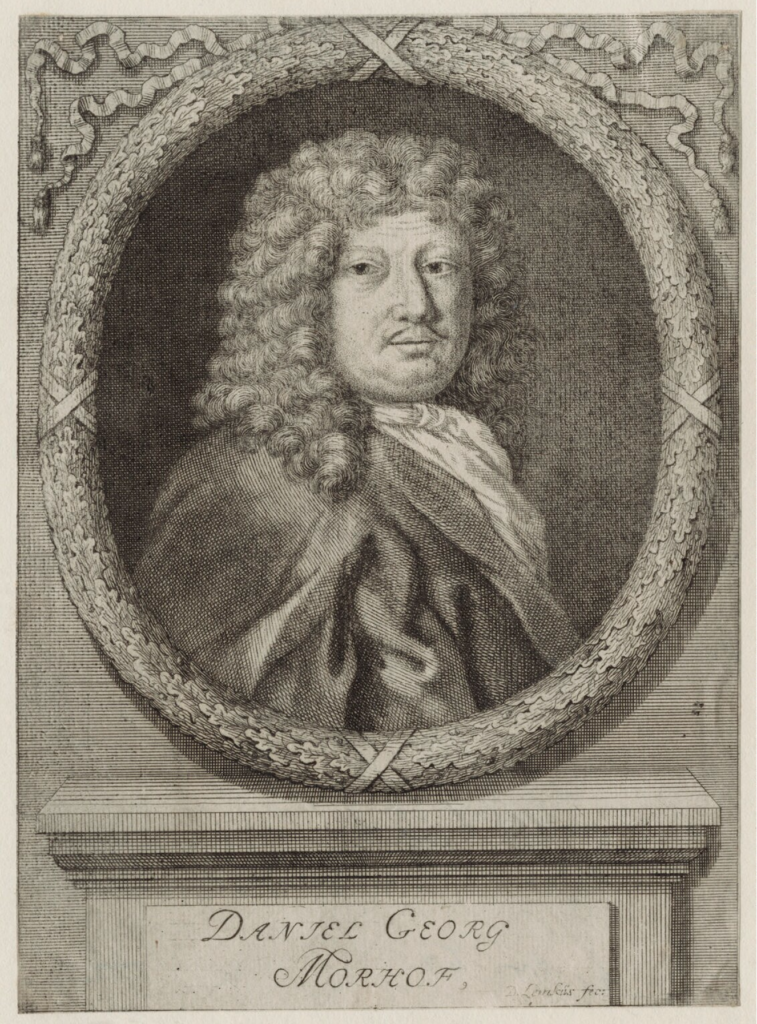
Morhof had already circulated information on the experiment two years earlier in a letter to the secretary of the Royal Society, Henry Oldenburg (c. 1619–1677). In this letter, he explained how his curiosity about this strange phenomenon led him to the wine cellar performance, where he acted as an “eyewitness,” closely examining the glasses to see if they were manipulated and even holding them during the experiment. Later, he tried to reproduce the experiment himself; in his attempt to transform this parlor trick into a scientific fact, Morhof highlighted Petter’s trustworthiness, his own trials, and his social status as a natural philosopher.
Petter’s ability to shatter glass with his voice was both difficult to explain and reproduce. He and his son were well trained in the experiment, and only after several attempts did Morhof himself succeed in shattering glass. When Oldenburg received Morhof’s description of the wine cellar experiment, the Royal Society decided to reproduce the experiment under the supervision of Robert Hooke (1635–1703). In a meeting held on November 17th, Hooke reported to the Society that he had managed to make the glass ring with his voice but was unable to break it.:
Mr. Hooke being asked, whether he had tried the experiment of breaking a glass with an (sic) human voice, said, that he had tried it, but found no other success, than that the glass had sounded upon the sound of a man’s voice.
Perhaps in need of defending his original observations to the Society after this unsuccessful reenactment, Morhof penned an entire treatise on the phenomenon, which was quickly translated into Dutch: Brief over het breecken van een glase roemer (1672) (Fig. 2).

The question of whether sound could move a material object became the subject of lively debates. In the early seventeenth century, several scholars proposed a wide variety of experiments and observations in order to establish the science of acoustics more clearly. In his Sylva Sylvarum, for instance, the English scholar Francis Bacon declared that whereas music had been well studied, “the Nature of Sounds in general, hath been superficially observed.” Around the same time, the French scholar Marin Mersenne wrote several treatises on the science of music, leading to his Harmonie universelle of 1636–37. Important for Morhof’s later endeavor, Mersenne observed overtones in strings, voices, bells, and organs. While he found it difficult to provide an explanation for the production of overtones, his descriptions drew wide attention to their existence.
We can now understand the difficulty in explaining how a glass could burst into pieces solely by means of sound. Also debated was what exactly constituted sound: was it moving air, a particular quality of a material that consisted of “audible spirits,” or something entirely different altogether? This question remained unanswered during the seventeenth century, while the Aristotelian idea of sound as a quality increasingly lost ground. Mersenne had described sound simply as the movement of air, but given the rise of experiments with sound in a vacuum, this idea became difficult to sustain. Scholars such as Athanasius Kircher (1602–1680) argued that the existence of sound in vacuum pumps proved that the vacuum itself did not exist, while others interpreted this as proof that sound travels independently from air.
Morhof’s glass experiment was only one of the multiple ways that overtones were investigated. Similar occurrences included feeling vibrations near a loud organ or seeing a string move when plucking another string tuned at the same pitch. The idea that the same phenomenon was responsible for the moving of a string and the breaking of glass was brought forth a few years after Morhof’s letter and book. In 1677, the mathematician John Wallis (1616–1703) submitted his account of string experiments. He also included a reference to glass shattering and the experience of feeling a church pew trembling to the sound of the organ, a common experience at the time. Wallis mentioned the breaking of “a fine Venice-glaß” by means of “the strong and lasting sound of a Trompet or Cornet,” but writes that he did not verify the experiment himself.
Around that time, the experiment was attempted on the continent, this time more successfully. The German physician Günther Christoph Schelhammer (1649–1716), for example, succeeded in shattering glass, confirming Morhof’s observations. A few years earlier, the Italian Jesuit Daniello Bartoli (1608–1685) also mentioned successfully performing the experiment in his Del Suono De’ Tremori Armonici E Dell’udito (1679). The Dutch engineer Cornelis Meijer, also living in Rome (Fig. 3), described the experiment as well as part of his collection of curious inventions and experiments. In his depiction, a group of wigged gentlemen drink, play music, and perform acoustic experiments together—a scene far removed, geographically and socially, from Petter’s Amsterdam cellar.

Although such accounts confirming Morhof’s observations existed, the glass-shattering experiment did not enter the mainstream of acoustic literature. The difficulty of reproducing the experiment transformed the desired outcome into a myth; Morhof’s account was dismissed and Petter was at times accused of being a fraud. One century later, Ernst Chladni (1756–1827) claimed in Die Akustik that Petter must have cut the glass beforehand. In his long series of experiments with vibrating plates, Chladi had never experienced a plate bursting from the sound of a violin. Only when making a small incision on its border would the plate break.
Although he disbelieved the account, Chladni’s reference to Morhof and Petter’s basement illustrates the experiment’s influence and appeal. The experiment seemed to have entered popular imagination as a myth—so much so that in 2005, the American TV show Mythbusters devoted an episode to Petter’s centuries-old experiment, “finally” proving its credibility. Using speakers, frequency analysis, and a metal singer, they were able to “once and for all” demonstrate the truthfulness of his account. Without all of this equipment, we can understand how difficult it was for Petter and Morhof to prove that the human voice can truly shatter a glass.


